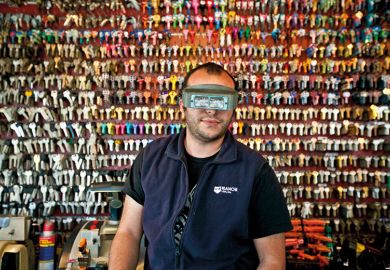Senior North American faculty appear to be slow in adopting online tools for research collaboration, suggesting academics rather than their journals are the chief obstacle to open access.
An analysis by the non-profit Center for Open Science found that its main scientist-to-scientist sharing tool was getting relatively weak adoption in the US and among the nation’s highest-ranking professors.
By country, the US and Canada were among the nations slowest to participate, while the UK and Australia were among the most receptive, according to the study of tenure-track faculty usage rates in psychology, the six-year-old centre’s initial target group.
The study focused on faculty in psychology and showed that more than a third of them have now enrolled in the centre’s open science framework for online research collaboration, said its co-founder and director, Brian Nosek.
But despite calls across academia for scientific journals to improve their open access practices, Dr Nosek acknowledged that academics themselves were not making regular and sustained use of the open science framework or any other tool for freely sharing their work.
The publishing industry, while criticised for emphasising subscription-based journals that limit reader access, was actually the most advanced sector of the research pipeline in creating standards and expectations for data sharing, Dr Nosek said.
Funding agencies were “starting to do more” to encourage data-sharing practices, while “the farthest behind are the universities”, which were generally too decentralised to impose data-sharing practices on their faculty, he said.
“The best place to intervene in universities to change the incentives landscape is in promotion and tenure,” Dr Nosek said. “And to change promotion and tenure is super hard.”
Scientists may just need more and better training in how to collaborate, according to a Northwestern University team that has created an online course for that purpose called teamscience.net.
The course is designed to teach scientists skills that include how to share credit for their joint discoveries, which its creators called “the most common area of dispute among collaborating scientists”.
Dr Nosek, however, said that his early evidence suggested that the most significant drivers of adopting scientist-to-scientist sharing platforms, such as the open science framework, were local initiatives and high-profile fraud cases.
Examples of local pressure, he said, included activists at the University of Oregon who have pushed for the broad adoption of collaborative practices on their campus, and multi-institution initiatives such as the UK Reproducibility Network.
Instances of scandals raising awareness, he said, include Brian Wansink, the Cornell University researcher accused of fabricating his attention-getting studies of food and human behaviour; and Diederik Stapel, the Dutch professor accused of falsified social psychology work.
Academics initially tend to respond to such revelations by dismissing the cases as aberrations that are irrelevant to their own work, Dr Nosek said. Then, “even though people dismiss that as, ‘He's a bad actor,’ they simultaneously recognise: ‘He’s a bad actor that was filling our journals with that crap and we had no idea, and we didn’t detect it, and what’s up with that?’”
Greater levels of sharing among scientists, and clearer systems for doing that, would help prevent such cases in the future, Dr Nosek said. But while 35 per cent of US psychology faculty were enrolled in the centre’s open science framework, perhaps only 10 to 15 per cent of the overall research community was actively engaged in systematic collaborative practices, he said.
“There’s still a lot of change yet to make,” he said.
Register to continue
Why register?
- Registration is free and only takes a moment
- Once registered, you can read 3 articles a month
- Sign up for our newsletter
Subscribe
Or subscribe for unlimited access to:
- Unlimited access to news, views, insights & reviews
- Digital editions
- Digital access to THE’s university and college rankings analysis
Already registered or a current subscriber?








